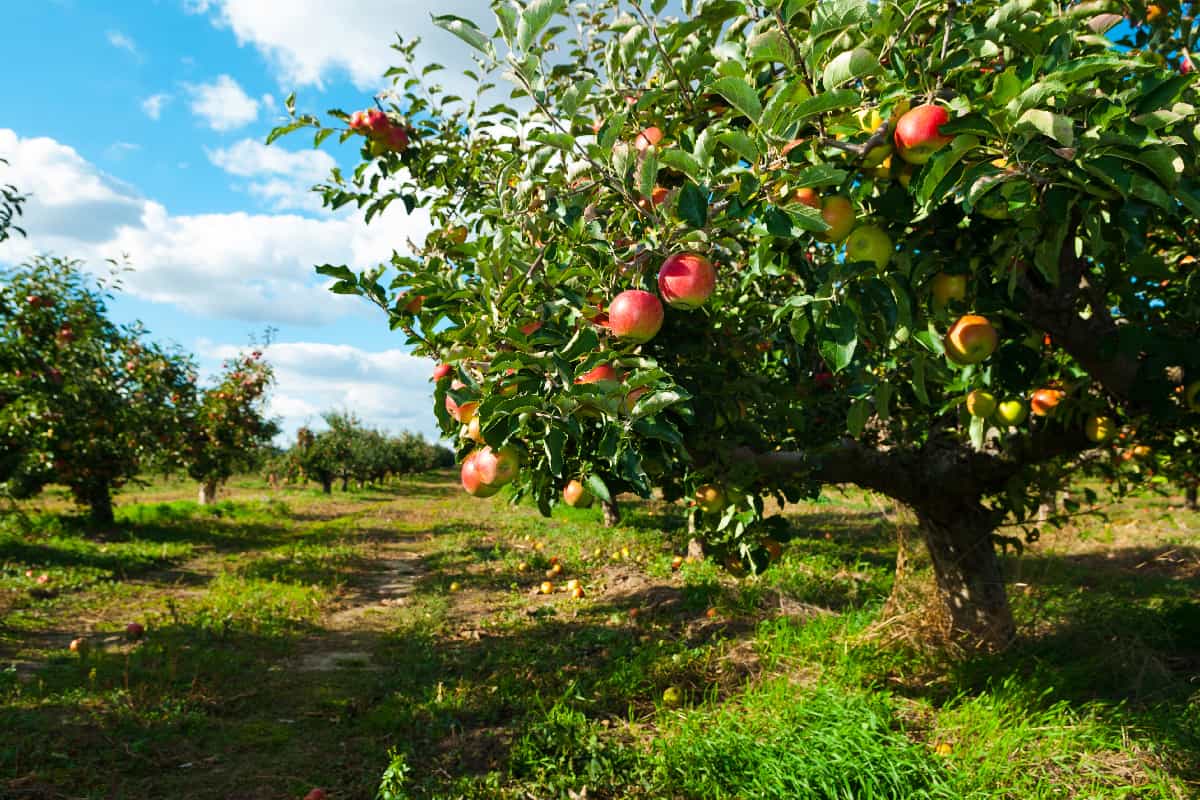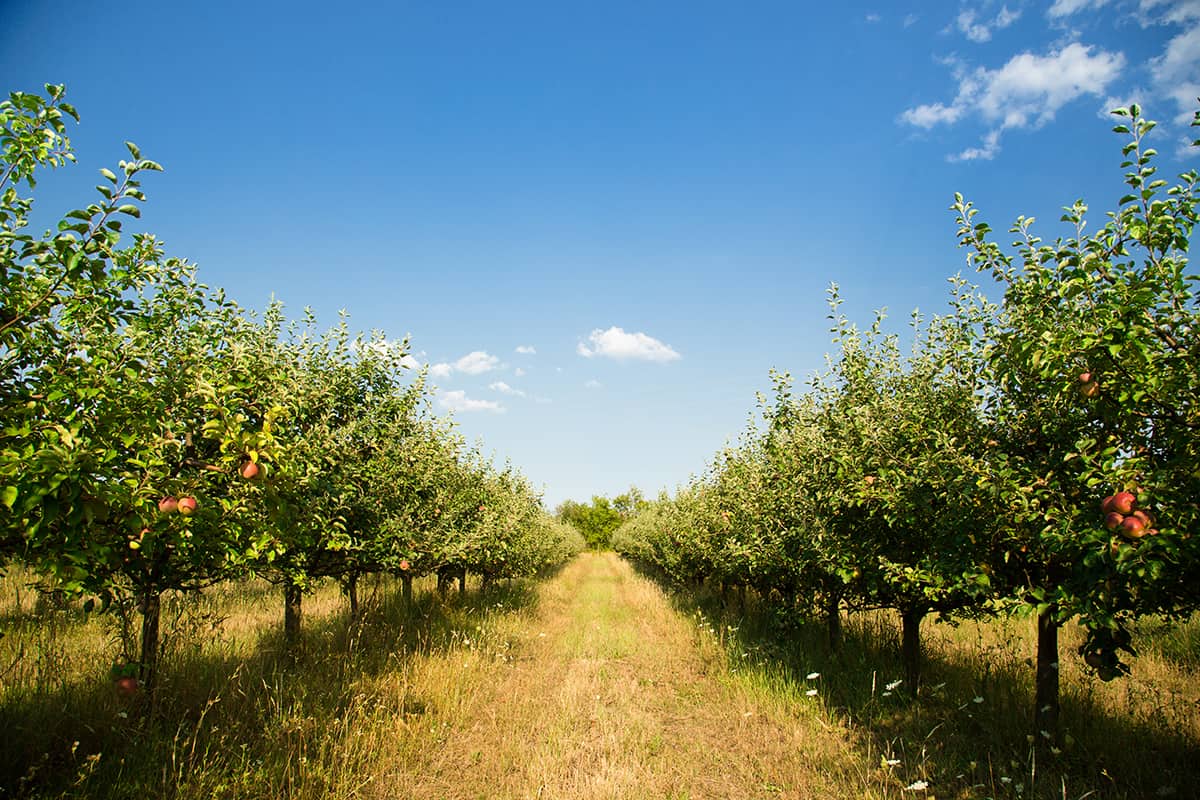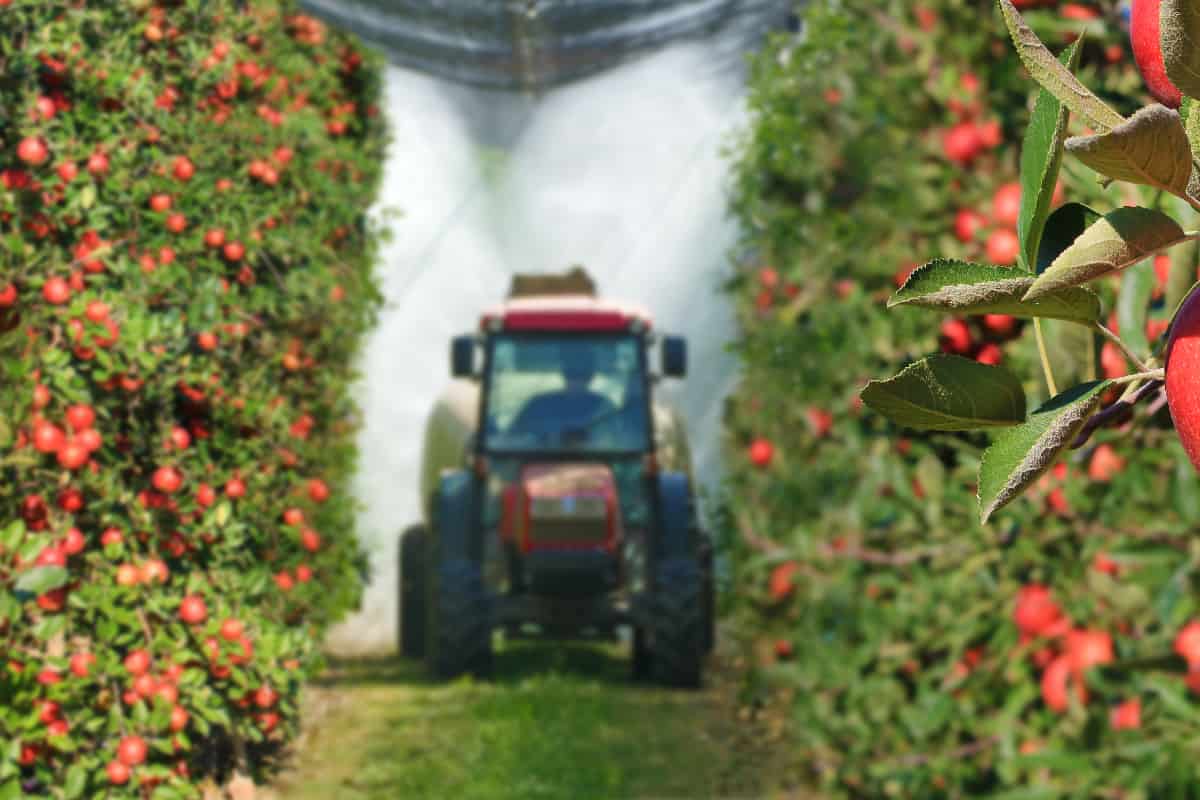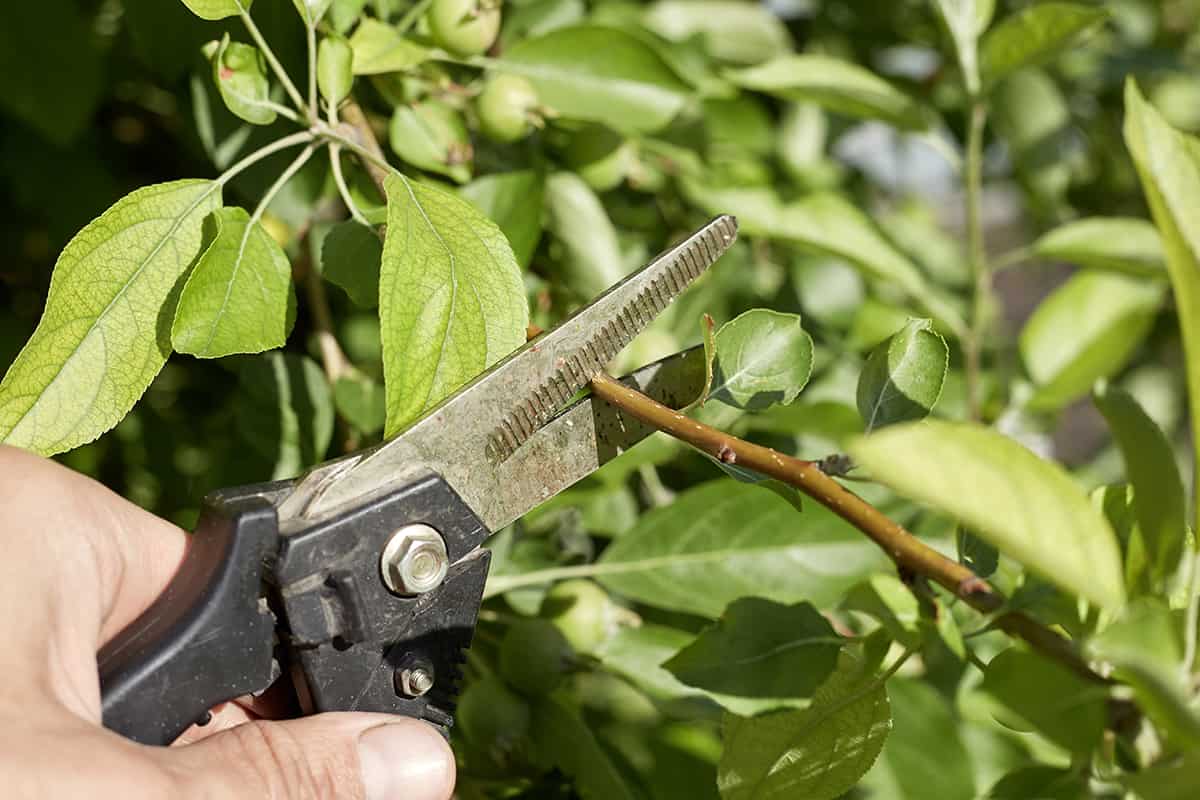It is never a good sign to find bite marks and gashes in your apple tree bark. Pests that eat the bark off your apple tree could compromise the tree's health. We have done research on what could be eating your apple tree's bark to help you out with this problem!
Rodents and insects are the main culprits for eating apple tree bark. Critters of all sizes resort to eating tree bark when they run out of food options.
Your tree may also suffer from infestations of apple maggots, moths, and woodboring beetles. There are a number of ways to protect your tree from pests, including using organic and non-organic sprays.
You will have to inspect your tree and its surroundings for a while to get to the bottom of which creature is eating your tree bark, and how to address the problem. To learn more on how to do this, read on!
![An apple hill filled with many assorted types of apple trees. What Is Eating My Apple Tree Bark [And How To Prevent It]](https://gardentabs.com/wp-content/uploads/2022/08/What-Is-Eating-My-Apple-Tree-Bark-And-How-To-Prevent-It-1.jpg)
Why Is My Apple Tree Losing Its Bark?
The bark is your tree's protective barrier. If too much bark gets chewed off, or a whole ring has been removed, this could kill your tree. A tree's bark does not grow back. Once the tissue is damaged, it becomes vulnerable.

This being said, do not immediately panic when you notice the bark peeling off your apple tree. While something could be eating the bark off, this is not always the main reason.
Peeling tree bark might be an indication that your tree is simply growing. The bark will be quickly replaced with a new layer as the old layer falls off. This is the best-case scenario since it only happens in some cases of rapid growth.
Why Pests Target Apple Tree Bark
Animals will eat your tree bark if there is a lack of food in the environment. The cambium, which is the layer that helps transport nutrients up the tree, lies under the bark. This becomes the pests' new food source.
Once animals chew through the bark and damage the tree, they will struggle to regulate its nutrient flow, resulting in illness or death. Mice are a common culprit, but voles and rabbits will also cause this type of problem.
As for bugs, insect borers are the type to eat your tree bark. They will also feed on tree bark and are parasites to its nutrients. They can bore holes into your apple tree bark and will even lay eggs.
These eggs eventually hatch into larvae that depend on the tree for nutrients. Your tree will be more vulnerable to these pests if it is injured or unhealthy. An already damaged tree will attract even more damage!
Healthy trees can also become victims of borers. When you find that something has been or is actively eating your tree bark, you should take action immediately.
How Do You Get Rid Of Pests On Apple Trees?

There are several different ways that you can stop pests from chewing your apple tree bark, depending on the cause. In some cases, you will need chemicals or pesticides.
The smartest option is to prevent pests from chewing your apple tree bark in the first place. Prevention can start anywhere from before the tree is planted up to when it is fully matured and completely healthy.
If you have the opportunity, before planting any trees, make sure your chosen location is a safe environment. Space out the trees a decent distance from one another to avoid issues from overcrowding.

If your trees are grown, take good care of them. Encourage health through regularly fertilizing and inspecting the tree. Healthy trees will be less susceptible to pests.
Cover any garbage cans or eliminate food sources that will attract unwanted animals. If you end up with a mice infestation due to poor garbage control, then this will put your trees at risk.
What Do You Spray On Apple Trees?

You can opt for organic or non-organic sprays to combat the critters eating your apple tree bark. You will usually be spraying a horticultural oil or dormant spray to the apple tree trunk.
There are a large variety of sprays for you to choose from. They are made for a range of infections and infestations that need care and research before using. There are no one-size-fits-all sprays.
You might be able to make do with a homemade spray, but there will be cases where you have to use a specialized insecticide or fungicide. If at any point you are unsure what spray to use for your apple tree, consult a professional.
Depending on the kind of spray, you have to follow its dedicated spray schedule. Check the specifications of your spray either with your local gardener or online.
Timing your spray is important to avoid accidentally killing things that are beneficial to your tree. For example, when using insecticides, make sure you are not harming any pollinators like bees or butterflies in the process.
Some sprays will have environmental and health hazards. You need to take note of this when figuring out your schedule.
An additional thing to note is that sometimes, going 100% organic with your apple trees is too difficult and risky. Despite the craze for organic apples, there is nothing wrong with using non-organic sprays if it is done safely and correctly. Your trees will thank you later.
Click here to see Horticultural Oil on Amazon.
How To Keep Bugs Off Apple Trees Naturally

We mentioned above a few ways to get rid of pests from your tree, including prevention and using sprays. In this section, we will go over more natural ways to keep the pests out.
- Eliminate hiding places by mulching the ground around your tree
- Prune your apple trees every winter
- Bait insects away from your trees with separate containers of discarded fruit
- Cover your tree trunk with corrugated cardboard
- Use natural or homemade oil sprays on the tree trunks
Click here to see Tree Trunk Protectors on Amazon.
How Can I Save An Apple Tree With The Bark Chewed Off?
While your tree can form a wound around chewed-off areas, it will not regrow the bark. Depending on the damage, though, you might still be able to save your tree.
First, figure out the cause of the damage. You can go straight to damage control if it was caused by rodents, but if aphids, maggots, or infections are the cause, address those issues first.
Assess if the tree can still be saved. Some cases will be harder to replenish than others, so choose your battles wisely. Clean up the injured part to prepare it for a bridge graft.
What Is Bridge Grafting
Bridge grafts involve cutting off some of the injured parts of the tree, as well as some healthy parts. A flap is then created on the trunk where the graft is bridged into.
Keep in mind that there is more to bridge grafting than this brief description. When grafting, you will have to keep in mind the flow of nutrients to ensure your graft is not going the wrong way.
The phloem is another layer in which the tree transports its nutrients. This layer is compromised with chewed-off bark. Nutrients from the phloem flow downwards. That being said, you have to take care not to insert the graft the wrong way up.
A rule of thumb is to make sure your bridge piece from the tree is upside down. That way, it can transfer its nutrients into the damaged areas. You can mark the bridge to ensure you are putting it on the right way.
Bridge grafting will not always work, especially if the season is not right. Doing a bridge graft during autumn or winter is risky, so avoid any damage to your tree during this time.
The best time of year for a bridge graft is in spring. Tree bark is easier to work with during this time, and it is also easier to cultivate the graft into the injury. You will also have more time and the right environment to nurse the tree back to health.
Once you have completed the graft, work on replenishing your apple tree. Fertilize and closely care for it so that it can return to a healthy and strong state.
When To Call For Help
Saving an apple tree through bridge grafting can be a difficult process. If you have never done it before, you could make a mistake and still end up losing your tree. At some point, you might have to contact a horticulture specialist to help you save your tree.
Wrapping Things Up
Many different bugs and animals will eat up your apple tree bark if you are not careful. It is important to practice preventative measures to avoid the risk of an unhealthy tree. Also, learn how to properly treat your tree in case the bark does get chewed off.
Before you go, check out our other articles!


